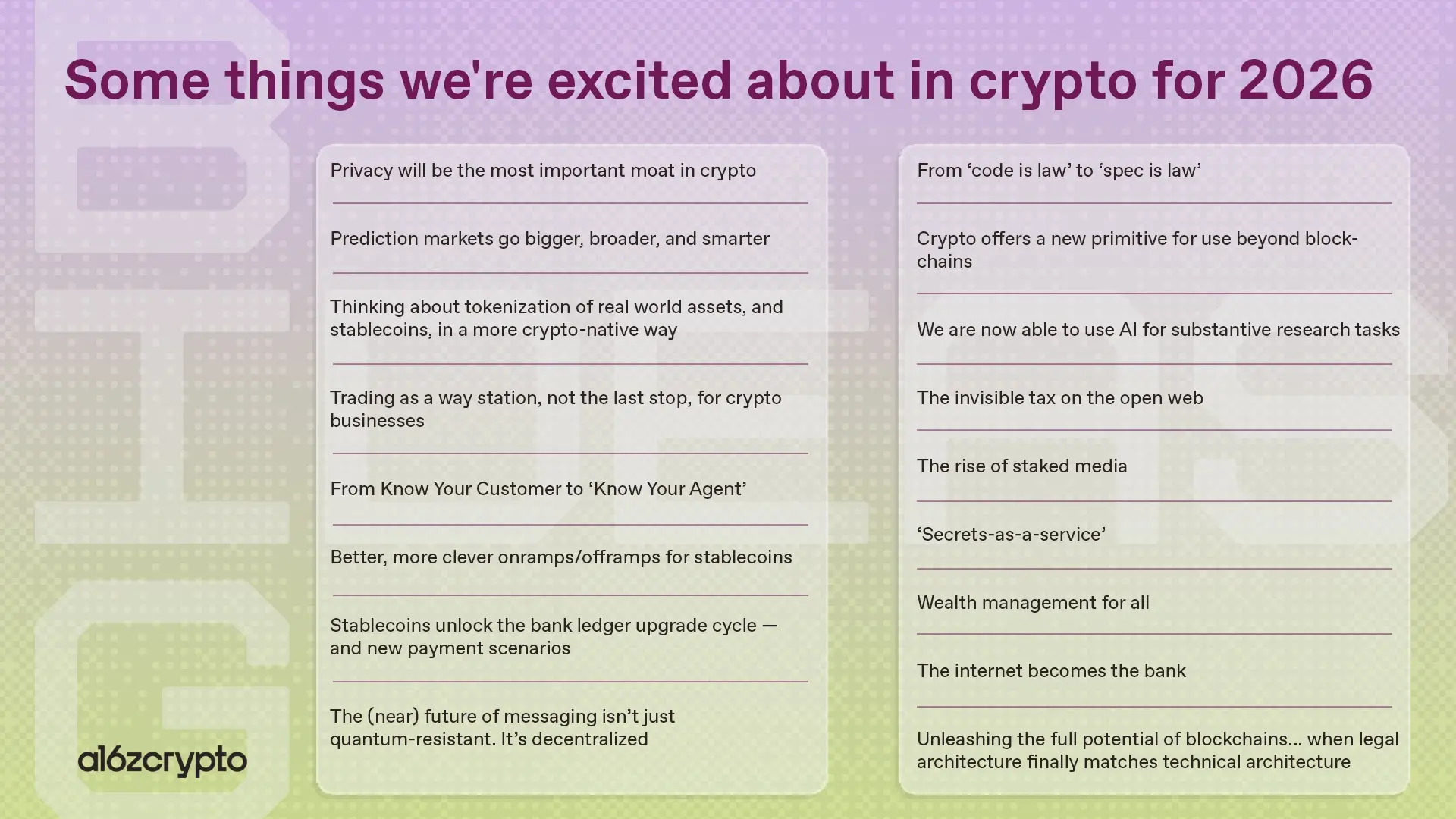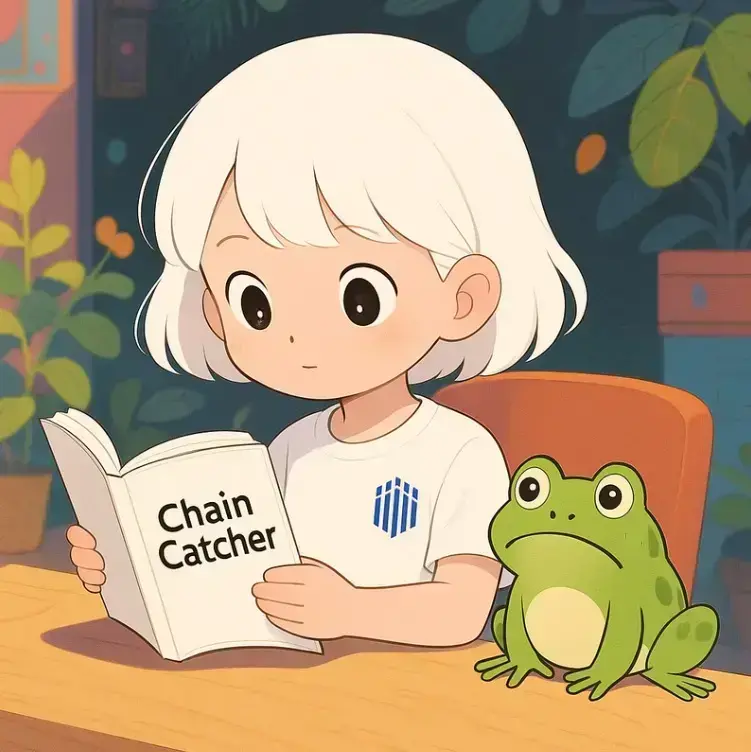Tom Lee’s latest interview: This is the “most hated bull market”—what is bitcoin’s ultimate valuation?
Podcast Source: Anthony Pompliano
Interview Guest: Tom Lee , Co-founder of Fundstrat and Chairman of BitMine
Broadcast Date: October 23, 2025
Compiled by: BitpushNews
Bitpush Note: In this episode, Tom Lee discusses whether artificial intelligence is a bubble, why this could be the most hated stock market rally in history, and how misleading economic data affects investor sentiment. Tom also shares his latest views on bitcoin and ethereum, and why the pace of innovation in the crypto market is starting to outpace traditional finance.

Summary of Tom Lee's Key Points
-
AI is not a bubble, valuations are still cheap
Nvidia's P/E ratio is lower than Walmart's, AI investment returns have already started to show, and there is no sign of bubble behavior yet. -
We are at the beginning of a supercycle
Corporate profits are at record highs, labor shortages, and productivity improvements support the logic of a long-term rally. -
Traditional valuation models are outdated
Amid current structural changes, stock P/E ratios should be much higher than historical averages. -
Bitcoin's ultimate valuation is $1.6M – $2M
If gold rises to $5,000/oz, bitcoin's network value will rise in tandem. -
Bitcoin's four-year cycle is failing
This cycle may be longer or operate in a new way; beware of the "consensus trap." -
Ethereum will become Wall Street's "sovereign reserve asset"
BitMine already holds the most ETH globally, with a target price of $21,000. -
Prediction markets outperform traditional economic surveys
Trueflation and PolyMarket are more accurate and transparent, while the UMich survey has become seriously distorted. -
A "robot tax" will be levied in the future
Every robot action will be tracked on-chain and taxed via micropayments to make up for the loss of the labor tax base. -
This bull market is the "most hated bull market"
Investor sentiment is extremely pessimistic, and political positions have distorted market perceptions. -
Retail investors are beating Wall Street institutions
Retail investors have a longer time horizon and greater volatility tolerance, gradually gaining an excess return advantage. -
Macro drivers are weakening, fundamentals are returning to dominance
Corporate profits are exceeding expectations, and the stock market rally is not solely driven by liquidity. -
AI robots are at the core of the productivity revolution
Labor shortages are giving rise to embodied AI applications, analogous to the wireless communication revolution of the 1990s. -
US inflation data is "contaminated"
The proportion of Democratic-leaning samples is too high, causing expected inflation to deviate from reality. -
On-chain financial infrastructure is rapidly taking shape
Tether has become one of the most profitable financial entities in the world. -
The market will enter an accelerated growth phase in 2026
Loose monetary policy, manufacturing recovery, AI technology implementation, and multi-asset tokenization will jointly drive the market.
The following is the interview transcript:
Is AI a bubble?
Pompliano:
Everyone is talking about the "AI bubble." What do you think? Is it really a bubble?
Tom Lee:
If you measure a "bubble" by risk-reward ratio, it's actually still early. Take Cisco in 1998 as an example—it was one of the largest companies, trading at a P/E of 56, and 18 months later, it rose to 210.
Now look at Nvidia. It's the most scarce company in the AI world—every leading model needs its chips—but its P/E is only 27. By comparison, Costco is 50, Walmart is 34. In other words, Nvidia is cheaper than a membership supermarket company. So we're still far from a bubble.
Pompliano:
Many people are still worried that AI investment is too much and companies are burning cash too fast. What do you think?
Tom Lee:
In fact, the money companies are spending on AI is already showing clear returns. It's a combination of two uses: one is the direct benefit of replacing labor, the other is the productivity boost from superintelligence.
The question we should ask is: how are these returns reflected in stock prices? That's hard to quantify. So I think current valuations aren't expensive. More importantly, AI spending is accelerating.
Look at what CEOs are saying now—they're basically all saying "we can't meet demand." And earnings reports confirm this: higher corporate profits, fewer employees, improved efficiency—which means valuations are reasonable or even undervalued.
Pompliano:
In past bubbles like the internet, real estate, and biotech, didn't people also find reasons to justify their behavior at the time?
Tom Lee:
That's right, and there really was "bubble behavior" then. For example, during the biotech bubble, many hedge funds directly invested in university lab projects just to grab a certain molecule. That was classic "bubble behavior."
But current AI investment is very cautious, with no signs of crazy spending. Companies are still evaluating returns, very rational. So I don't think AI is a bubble. There may be bubbles elsewhere, though.
Historical valuation models are outdated, new valuation logic is forming
Pompliano:
Do you think traditional P/E valuation methods are outdated? I've always felt that today's companies need to add a "monetary premium" layer to valuation logic.
Tom Lee:
Exactly, valuation models are dynamic. From 1940 to 1967, the US 10-year Treasury yield rose from 2% to 6%. Logically, valuations should have fallen, but the actual P/E rose from 8 to 27. Why? Because nominal earnings grew faster.
And today, S&P earnings are more recurring income, which naturally brings higher valuations. In addition, US Treasuries themselves are expensive—a 4% yield corresponds to a 25x valuation. So I fully agree: today's P/E ratios can't be viewed by historical standards.
And in the past five years, we've experienced six black swan events—pandemic, supply chain collapse, inflation shock, aggressive Fed rate hikes, tariff shocks, and US-Iran nuclear facility conflict. Yet corporate profits didn't decline, they grew. So I think today's P/E should be higher.
Pompliano:
People used to think stock picking was all about fundamentals, but now it feels like a single Fed comment matters more than company earnings. What do you think?
Tom Lee:
Yes, macro factors are indeed more influential now. But don't ignore fundamentals—this year's earnings reports are extremely strong. This quarter, 85% of companies beat expectations, with annualized growth over 15%. That's not the growth rate of a "late-stage bull market."
Many financial companies' earnings look like tech companies, but the market still values them traditionally, which actually presents a revaluation opportunity.
"Granny Shots" ETF: Low-turnover strategy betting on the supercycle
Pompliano:
Your "Granny Shots" ETF has been very successful. Can you introduce the logic behind the strategy?
Tom Lee:
We only launched this fund last October, and in just 11 months, assets have surpassed $3.3 billions, making it one of the fastest funds in history to break $3 billions. This year, the return is 27.5%, ranking fifth among 1,330 large-cap funds.
This is a low-turnover fund, and the logic is to bet on the "supercycle." We have seven major themes, such as AI, energy security, monetary policy, etc. We only buy stocks that fit at least two themes.
For example: Google and Meta fit multiple themes—they are AI stocks, favored by millennials, and related to monetary policy. JP Morgan is also included, as a "millennial bank" and linked to a loose financial environment.
AI robots are coming—what about the tax system?
Pompliano:
Recently, humanoid robots have been going viral—not just moving goods, but also working as hotel receptionists and cleaners. What do you think about the development trend of embodied AI?
Tom Lee:
This fits perfectly with our "global labor replacement" supertheme. The world is facing a shortage of quality labor, and AI and robots are filling that gap.
Historically, when wireless communication started, it was similar: companies raised money, constant experiments, intense hype, and eventually the strong survived. The robotics industry is similar now—there will be capital waste, but ultimately world-changing players will remain.
Pompliano:
You've mentioned that governments may tax robots in the future. How would that work?
Tom Lee:
I think there will be a "robot tax," and it will be a micropayment mechanism. That is, for every work action completed, such as moving a box, a tax of $0.00001 is levied.
There's precedent for this—of the US's $2.8 trillions in fiscal revenue, a large portion comes from wage income tax. If robots replace humans, that tax base must be replaced by robot activity.
And with blockchain technology, we can precisely track machine activity and use crypto payment systems for tax collection, such as Tether. These systems support highly precise microtransactions (even more granular than the dollar).
Economic data is no longer reliable—UMich survey data is "contaminated"
Pompliano:
You've mentioned that the University of Michigan consumer survey data (UMich) is no longer reliable. Is that true?
Tom Lee:
Yes. UMich has long been the most valued survey by economists, covering inflation expectations, consumer confidence, etc. But recently, we've found major problems with its data structure.
For example: current one-year inflation expectations are 4.3%, the same as the 2022 inflation peak, but actual CPI is mild. Looking at the data details: Democratic respondents say 5.1%, Republicans say 1%. And 4% of Democratic respondents think inflation will reach 30% next year.
Why such a big difference? Because the sample is unbalanced: 18 months ago, only 49% of the sample were Democrats, now it's risen to 65%. This makes the entire survey unrepresentative.
Pompliano:
Will this distorted data affect market and policy decisions?
Tom Lee:
It definitely has an impact. Many quant systems and the Fed refer to this data. If the data itself is "contaminated," the system will draw wrong conclusions, and policy may be biased as a result.
Also, UMich used to be a phone survey, now it's all online via email, so the sample source may have shifted.
Prediction markets are the future
Pompliano:
So do you think we need alternatives, like blockchain-based prediction markets?
Tom Lee:
Absolutely! PolyMarket is a great example. It extracts real expectations through "market betting," superior to traditional surveys.
There's also Trueflation, which doesn't ask "what do you think inflation is," but directly scrapes real-time price data, such as rents on e-commerce sites, supermarket prices, etc.—accurate, transparent, timely, even updated daily, more reliable than CPI.
Pompliano:
You've said that in the future, stocks will be split into "factors" for prediction trading. How should we understand this?
Tom Lee:
This is the power of "Tokenization." For example, Tesla can be split into several factors: sales in China, Model X order numbers, 2026 EPS forecasts—each factor can have a prediction market set up on-chain. This kind of split prediction is more transparent than traditional stocks and allows investors to bet only on the data they care about.
Pompliano:
You've observed that projects in the crypto world that "break out of the circle" are often stronger than traditional alternatives. What are some typical examples?
Tom Lee:
Here are a few of the most typical:
-
Tether: 150 employees, but $20B in profit, with per capita profit far exceeding JPMorgan. By profitability, Tether is one of the world's top ten banks.
-
Trueflation: Provides daily on-chain inflation data, more real and transparent than official CPI.
-
PolyMarket: Accurately predicted all 50 states in the 2024 election, with higher accuracy than all mainstream models.
This shows one thing: transparent on-chain systems can beat traditional black-box models.
BitMine Ethereum Strategy: Holding the Most ETH Globally, Targeting $21,000
Pompliano:
BitMine is your new project, aiming to hold 5% of Ethereum. How is it progressing?
Tom Lee:
We currently hold 3.23 million ETH, about 2.7% of total supply, making us the single largest ETH holder in the world, surpassing the Ethereum Foundation.
BitMine's core strategy is to use Ethereum as a sovereign reserve asset and conduct native staking, with an expected yield of about 3%. By market cap, this could generate $500 millions in pre-tax profit annually, enough to rank among the top 800 most profitable US companies.
Pompliano:
Why are you so bullish on Ethereum? Isn't bitcoin the real digital gold?
Tom Lee:
I'm a bitcoin believer myself and see bitcoin as digital gold and an excellent "store of value." But Wall Street, when building a financial system, won't choose the bitcoin blockchain because it doesn't support smart contracts.
Building tokenized dollars, stocks, and payment systems all require a smart contract platform. Currently, over 70% of tokenization projects are on Ethereum, and it has a 100% uptime record and a mature ecosystem.
If, in the future, 20 major investment banks use ETH as a financial reserve asset—ETH's price will skyrocket.
We expect ETH to return to its 2021 ratio to BTC, corresponding to a target price of $21,000/ETH.
Is gold's rise bullish for bitcoin?
Pompliano:
Gold has surged recently. Do you think this is bearish or bullish for bitcoin?
Tom Lee:
This is extremely bullish.
Gold's network value has risen significantly. If gold eventually stabilizes at $5,000/oz, the total market cap will be huge.
If bitcoin can match gold's network value, its fair value will be $1.6M to $2M per coin. So the higher gold goes, the higher bitcoin's ultimate future value.
Pompliano:
How long do you think it will take to reach this valuation?
Tom Lee:
I think it's possible within five years. Bitcoin's trend is often "pulled up" by gold rather than limited by it. Gold establishes the "anchor of monetary value," and bitcoin will rise with this anchor.
Does bitcoin's four-year cycle still exist?
Pompliano:
Many in crypto believe in the "four-year cycle." What do you think?
Tom Lee:
The vast majority believe bitcoin will peak early next year—because that fits the historical halving rhythm. But I personally think:
When most people believe something, it's very likely not to happen.
So either bitcoin has already peaked early, or we're in a new, longer cycle.
Pompliano:
Do you think there will still be drops of more than 50% in the future?
Tom Lee:
Of course. Even US stocks have seen multiple 25% corrections in recent years. The crypto market is more volatile, so 40-50% drops can still happen, even in an uptrend.
Pompliano:
Do you think bitcoin still has a chance to surpass gold this year and hit $200,000 by year-end?
Tom Lee:
Absolutely possible.
Don't forget, bitcoin's best trading days in history are concentrated in just 10 trading days each year, usually in Q4.
And this Q4 has many catalysts:
-
The Fed turning dovish
-
US government shutdown risk easing
-
US-China tensions stabilizing
-
Seasonally strong stock market (rising stocks drive bitcoin up)
So the chance of a big bitcoin rally in Q4 is very high.
Have retail investors really beaten Wall Street? Why are they performing better?
Pompliano:
Many retail investors are outperforming institutional fund managers now. What do you think?
Tom Lee:
I have two guesses:
-
Institutions "consume each other's alpha"
Every institution uses the same data and algorithms, so conclusions are similar, resulting in "everyone becoming average." -
Retail investors are more like "permanent capital," thinking long-term
Institutions mostly trade on a 6-week time scale, while retail investors often think in 5-10 year terms. They don't care about short-term volatility and are more likely to ride out cycles and reap big returns.
Additionally, crypto traders are generally more adapted to volatility than stock investors, and even better at playing market sentiment.
Pompliano:
They've experienced two 80% crashes, so a 20% correction in stocks is nothing to them.
Tom Lee:
Totally agree. I've met some top crypto traders who are also very precise in the stock market, because they've developed strong emotional control and rhythm.
Why is this the "most hated bull market"? Is the reason really politics?
Pompliano:
You call this rally the "most unpopular stock market rally." Why?
Tom Lee:
Data shows investor sentiment is extremely pessimistic. For example, the AAII net bullish indicator averaged -11.7 for the year, a level only seen in 1990, 2008, and 2022—three bear market years.
But now the S&P is up 15%. How can this be a bear market?—So this is the "most hated bull market."
Why? Because of political division:
-
57% of professional investors are Democrats
-
66% of hedge funds lean Democrat
-
69% of venture funds support Democrats
They don't agree with Trump's policies—even if those policies bring a market rally, they won't accept it. So they're always "shorting sentiment."
Pompliano:
This really made me realize: market research is also contaminated by political views.
Tom Lee:
It's not just people—even algorithmic systems are contaminated. Algorithms read public comments and opinion articles, and those texts are already wrapped in political positions.
Pompliano:
What do you think of the Opendoor incident? Retail investors united to push the CEO to resign and brought in Shopify's former CEO.
Tom Lee:
I haven't studied this company in depth, but I support this kind of action. If reform can be promoted through legal and rational channels, and more retail investors benefit, that's a healthy sign for capital markets.
Social media provides a megaphone for trusted individuals, and distributed influence is challenging the monopoly of traditional institutions.
Looking ahead to 2026
Pompliano:
Finally, let's talk about 2026. What's your view on the medium- to long-term market trend?
Tom Lee:
We're still in a potential phase.
From a fundamental perspective, there are several positive factors for 2026:
-
Loose monetary policy: Helps lower mortgage rates and release housing demand.
-
ISM manufacturing index rebounds from the bottom: It's been below 50 for 32 consecutive months, the longest downturn in history. Once it rebounds, manufacturing confidence will improve significantly.
-
AI and robotics technology implementation: Brings productivity improvements and drives corporate profits.
-
Stablecoins and on-chain assets explode: Will push the financial system into the on-chain era.
But note, if the S&P closes above 8,000 at the end of 2025, there may be a 30% correction in 2026 because the upward pace was pulled forward.
Disclaimer: The content of this article solely reflects the author's opinion and does not represent the platform in any capacity. This article is not intended to serve as a reference for making investment decisions.
You may also like
a16z Annual Report: The 17 Most Exciting Web3 Ideas for 2026
Stablecoins will become the infrastructure of Internet finance, AI agents will gain on-chain identity and payment capabilities, and the advancement of privacy technologies, verifiable computation, and compliance frameworks will drive the crypto industry from pure trading speculation towards building decentralized networks with lasting value.

Morning Brief | a16z Crypto releases annual report; crypto startup LI.FI completes $29 million financing; Trump says the rate cut is too small
A summary of important market events on December 11.

Trend Research: The "Blockchain Revolution" is Underway, Remain Bullish on Ethereum
The integration trend in the crypto market and Ethereum's value capture.

Interest Rate Cuts Implemented, Why Are Assets Acting "Rebellious" Collectively?

